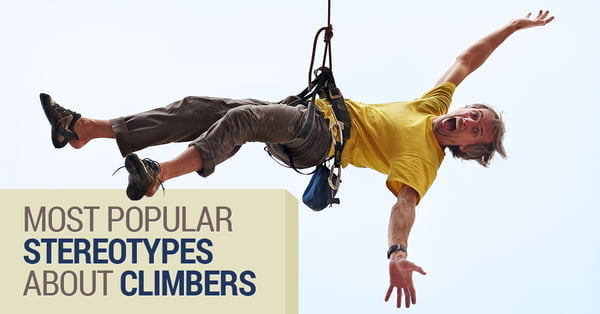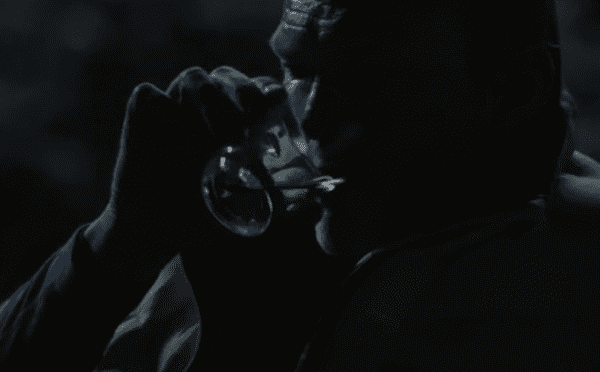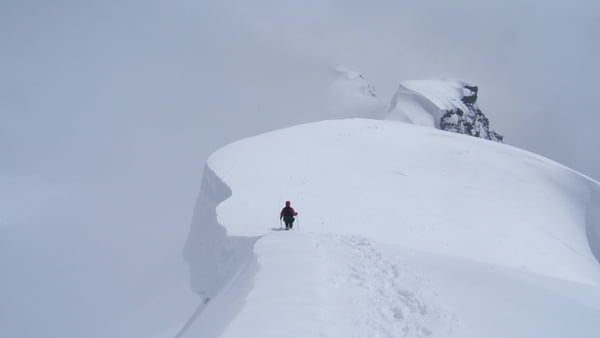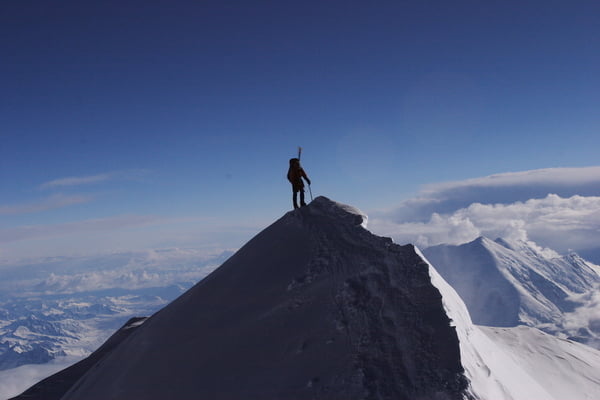
Mountaineering
BeginnerHiking
BeginnerRock Climbing
BeginnerIce Climbing
BeginnerBackcountry Skiing
BeginnerMountain Planet
12 years, Australia
RIGHT OR WRONG: VERIFYING FIVE MOST POPULAR STEREOTYPES ABOUT CLIMBERS AND MOUNTAINEERS

Are climbers and mountaineers fearless adrenaline-junkies? Is it true that they are not afraid of the altitude and just risk their lives for sport achievements, Guinness World Records and fame?
For many people mountaineering is a mysterious and romantic hobby. Often, climbers and mountaineers use words such as "illness", "state of mind", or "religion” to define climbing and mountaineering. For them, it doesn't require an explanation, but just an understanding. Other people may have many controversial statements.
Mountain Planet conducted a survey among members registered on mountainplanet.com to test the most resonant allegations about climbing and mountaineering. It turned out that some stereotypes about climbers and mountaineers are quite true, but most of the claimed judgments have nothing to do with them.
STEREOTYPE: CLIMBERS AND MOUNTAINEERS DON'T DRINK ALCOHOL
Conclusion: wrong
It is believed that any activity that involves a risk to life, a priori implies a rejection of any psychoactive substances. Alcohol is part of them and it contains substances that affect the metabolic processes in the body. In many countries (especially in Eastern Europe), mountain climbing is considered a sport activity. In order to practice sports, our body must be completely healthy to support the climber during the most crucial moment.
In fact, climbers and mountaineers don't drink alcohol only during the period of preparation for serious ascents, or during sports expeditions. While, except during these periods, normally, they are ordinary people who do not limit themselves so strictly.
In 2015, the Hollywood film "Everest" was released. It's based on real facts that occurred in the Himalayas in May 1996. If you watched it, you probably paid attention to the moment when in the 5300-meter altitude Everest base camp, the head of the American expedition Scott Fisher and his main guide Anatoly Boukreev share a bottle of whiskey. If it was not true, then world's leading climbers would express their critics. But in fact, professionals are more focused on such inconsistencies as missing glacier glasses, or the constant oxygen masks removal, instead of the bottle of whiskey. This is to highlight that the practice of drinking alcohol is present even during such complex and dangerous expeditions as climbing Mount Everest.
 Ingvar Eggert Sigurðsson in a Scene from the movie Everest. Picture: Universal Pictures
Ingvar Eggert Sigurðsson in a Scene from the movie Everest. Picture: Universal Pictures
STEREOTYPE: ALL CLIMBERS AND MOUNTAINEERS ARE FEARLESS ADRENALINE-JUNKIES
Conclusion: wrong
Scientists believe that the thirst for new sensations and the desire to take risks is related to the Homo sapiens species. At least, all we have a distinguished brain structure responsible for this behaviour, and so far, it is not proven that climbers or mountaineers have a stronger inclination than those practicing ordinary sports.
George Herbert Lee Mallory, alpinist, member of three British expeditions to the Everest, is considered the first person to attempt to climb it. When Mallory was asked "Why are you going to Everest?", he replied "Because it's there!". Each climber and mountaineer has his own personal version of the answer to the question "Why are you going into the mountains?". But you rarely hear from them that they are doing this in order to get another injection of adrenaline. Moreover, in their interviews, leading climbers and mountaineers repeatedly state that by their nature they are not adrenaline-junkies at all, and that they climb for absolutely other reasons.
 Leading climbers repeatedly state that by their nature they are not adrenaline-junkies at all
Leading climbers repeatedly state that by their nature they are not adrenaline-junkies at all
STEREOTYPE: CLIMBERS AND MOUNTAINEERS ARE NOT AFRAID OF ALTITUDE
Conclusion: wrong
According to science, nausea attacks and dizziness at high-altitude is a normal physiological response of the human body. The obsessive fear of heights is called acrophobia, and according to the statistics about 2% of the world's population suffer from it. Many people with acrophobia can experience panic attacks at high-altitude and are unable to descend independently.
For this reason, among climbers and mountaineers, it's most likely that you will not find people suffering from a very pronounced form of this phobia. But at the initial stages of climbing and mountaineering, fear can be present indeed, and even quite pronounced. However, with time the feeling of fear will disappear, but it is a mistake to think that, one day, it will completely disappear (by the way, being completely fearless is very dangerous!).
By the way, even very eminent, experienced climbers and mountaineers admit that they are still afraid of altitude. But it's completely different. For example, while standing on the terrace of a skyscraper, or on the edge of a cliff. At the same time, while climbing with usual and "comfortable" conditions, altitude fear almost disappears thanks to many years of practice and, most importantly, trust in equipment.

STEREOTYPE: ALL CLIMBERS AND MOUNTAINEERS ARE USED TO COLD TEMPERATURES
Conclusion: wrong
As you know, the habit is formed in the process of repeated execution of the action at the stage of its development, when in its execution there are no more volitional or cognitive difficulties. We are talking about getting used to the cessation or reduction of the acuteness of the reaction to the stimulus still acting, which causes emotionally positive states during the period of realization of the habit and, on the contrary, gives rise to negative experiences in circumstances that hinder its implementation.
Some Soviet alpinists wrote in their memoirs that during the preparatory period for the most serious high-altitude expeditions, they used to develop low susceptibility to cold through special methods of organism tempering.
In modern high altitude alpinism cold isn't faced by getting used to the cold, but at thanks to high-tech clothing and special medicines. The assumption of such medicines contributes to blood dilution, by positively improving its chemical composition. This way, the blood supply to the extremities works better and they receive more oxygen, which means much more cold resistance.
STEREOTYPE: ALL CLIMBERS AND MOUNTAINEERS USE OUTDOOR CLOTHING IN THEIR DAILY LIFE
Conclusion: right
Representatives of the alpine community can easily be recognized on the streets of the city by the clothes they are wearing. Practicality, reliability and comfort are the main features of alpinists, which they use while choosing the right equipment. These rules apply, in particular, to clothing. Accustomed to its comfort, climbers and mountaineers continue to enjoy outdoor equipment not only in the mountains, but also in their daily life.
This does not mean that climbers are always dressed in high-tech trousers and jackets, but normally in almost 100% of cases you will see on them some of their outdoor equipment, such as sports shoes, a small backpack, fleece jacket, hat, gloves, etc.
Of course, there are always exceptions to the rules, but it is impossible to call such examples ubiquitous, so it doesn't allow to deny the established stereotype that all climbers and mountaineers use outdoor clothing in their daily life.





